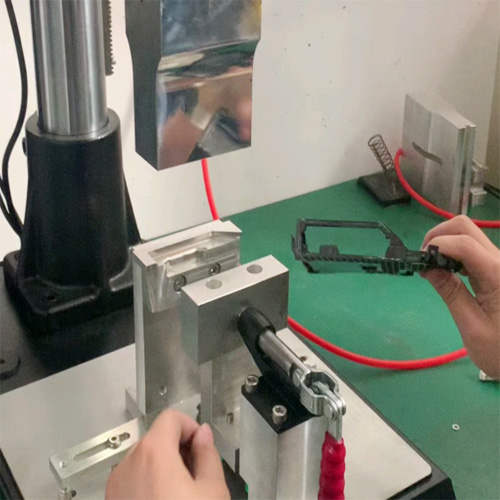
Adjustment of Parameters for Ultrasonic Wire Harness Welding Machine
Parameter Adjustment, Testing, and Analysis for Ultrasonic Wire Harness Welding Machine
Parameters are adjustable and measurable: amplitude, pressure, welding time, welding energy,
welding height, welding width.
Pressure: The larger the cross-sectional area, the higher the welding pressure. A good device is digitally
controlled by an electric proportional valve.
Welding Width: According to IPC standards and the German Volkswagen standard VW60307-CN-2005,
the aspect ratio of the weld nugget width to thickness should be between 1:1 and 2:1. The larger the
cross-sectional area, the closer the width and thickness of the nugget are to 2:1. Therefore, when we
receive wire harness products, we first determine the welding width based on this rule; then, based on
the width, we determine an approximate welding height. The welding machine uses a stepper motor
or servo motor to adjust the welding width.
Welding time and welding energy need to be determined by trial welding based on the cross-sectional
area of the wire. The height parameter is an important analysis parameter: Once we have determined
the welding width, based on the previous analysis, we can calculate the height value. The height before
and after welding can serve as criteria for judging whether there is missing wire before welding and
whether the welding is satisfactory.
Quality analysis mainly refers to height determination; of course, welding energy consumption and time
can serve as additional constraint parameters to see if they exceed the range. General practice: set aheight
value (which can be determined through actual trial welding calculations), then set a deviation value. When
the height deviation exceeds the range, it can be considered as non-compliant. This applies before and after
welding as well.
Phone: +86-15989541416
E-mail: michael@sztimeast.com
Whatsapp:+86-15989541416
Add: 3/F, Building 5,Huixin Intelligent Industrial Park, Xinhu, Guangmin, Shenzhen,China 518107